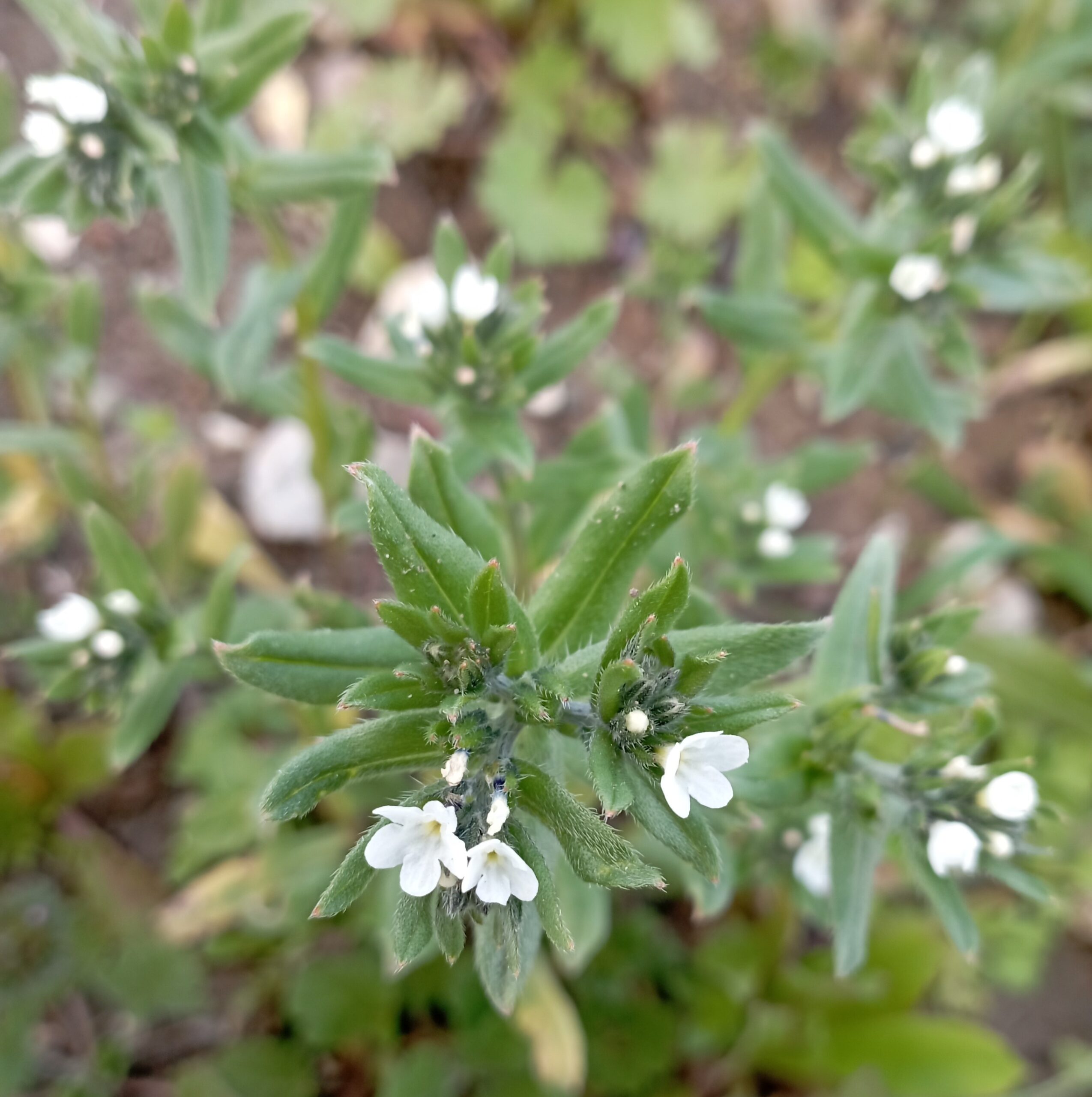Βουγλωσσοϊδές της κοιλάδας, υποείδος της κοιλάδας
Etymology of Buglossoides arvensis subspecies arvensis: "Buglossoides" derives from Ancient Greek compound adjective "βούγλωσσος -οειδής", meaning "ox-tongued". "Arvensis" is Latin and it means "from the field, meadow or grassland", referring to the habitat where it prefers to grow. Buglossoides arvensis subsp. arvensis is a synonymum to Lithospermum arvense.
There are five Buglossoides species and subspecies in the wild Cypriot habitat. The specimen of the picture was photographed inside a garden in Kato Arodes village (Akamas region), at an altitude of approximately 590 metres, in February.
Buglossoides arvensis subspecies arvensis is an annual plant growing up to 50cm tall. The stem of the plant is erect or suberect, often solitary, little-branched or unbranched, reddish near the base, greenish towards the apex, and covered with adpressed whitish bristles.
Buglossoides arvensis subspecies arvensis is encountered in all the regions of Cyprus, from 0 metres altitude up to 1950 metres (meaning anywhere in Cyprus). It is flowering from January until May. It is a common plant in Cyprus and it is found in anthropogenous habitats, stony fields, cultivated fields, and roadsides.
How to identify Buglossoides arvensis subsp. arvensis:
Buglossoides arvensis subsp. arvensis is very similar in appearance to Buglossoides arvensis subsp. sibthorpiana and Buglossoides incrassata subsp. splitgerberi.
Buglossoides arvensis subsp. arvensis grows at any altitude, whilst Buglossoides arvensis subsp. sibthorpiana between 1525-1950 metres and Buglossoides incrassata subsp. splitgerberi between 225–600 metres.
Buglossoides arvensis subsp. arvensis grows all around Cyprus, whilst Buglossoides arvensis subsp. sibthorpiana grows only on the high Troodos Mountains range and Buglossoides incrassata subsp. splitgerberi does not grow in the northern and southern coastal areas.
Buglossoides arvensis subsp. arvensis's flowering period starts early from January and lasts until May, whilst Buglossoides arvensis subsp. sibthorpiana's flowering period is between March and June, and Buglossoides incrassata subsp. splitgerberi's between March and April.
Buglossoides arvensis subsp. arvensis and Buglossoides arvensis subsp. sibthorpiana have cylindrical pedicels, straight, and their gynobasis is horizontal. Buglossoides incrassata subsp. splitgerberi's pedicels when fruiting are thickened, slightly curved, and its gynobasis is oblique.
Buglossoides arvensis subsp. arvensis is an erect annual of mostly anthropogenous habitats , usually more than 15 cm high (all apply to Buglossoides incrassata subsp. splitgerberi as well), its calyx is often strongly accrescent after anthesis, and its nutlets are 3 mm long. Buglossoides arvensis subsp. sibthorpiana is a prostrate or decumbent annual of (semi-)natural high mountain habitats, usually less than 10 cm high, with a calyx not much accrescent after anthesis, and nutlets 2 mm long.

